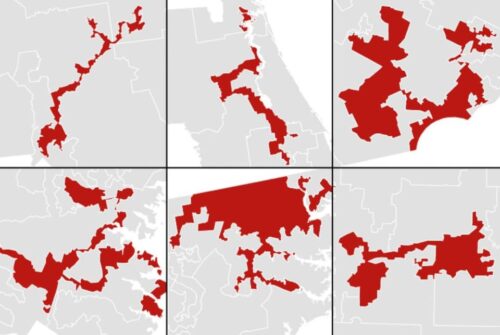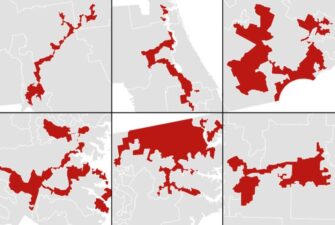Every 10 years, a nationwide census is taken to determine how many people are currently living in the United States in order that their community is adequately (according to the Constitution) represented in the House of Representatives. As a result of the census, politicians currently in power (as well as the usual Soros shills) get to work to manipulating districts in order that they stay in power.
Republican states picked up the most congressional seats in the last election, and Republican legislatures control the process in the most states, but at the same time, Republican counties lost population while Democratic counties gained. (This was a surprise, most thought the drain had ended. Post-COVID migration may be permanent which will be another variable in traditionally red states.)
Republican legislatures will have the final say over the redistricting process in 20 states covering 187 congressional districts, while Democrats control the process in just eight states with 75 districts. The remaining states draw maps using independent commissions, are composed of a split government, or are at-large seats (which aren’t subject to a redistricting process). The GOP advantage here is another reason why forecasts lean toward the Republicans.
The paradox comes in however, when one looks at other census numbers, says Brookings. The new numbers show another pattern, one that tilts in the opposite direction. Overall, rural counties steadily lost population over the past 10 years, and rural counties tend to be strongly Republican. “The average county with a FiveThirtyEight urbanization index below 8 lost 3.1% of its population between 2010 and 2020,” a recent FiveThirtyEight article reads. “This encompasses the 1,430 most rural counties in America–1,302 of which voted for former President Trump in 2020 and only 127 voted for President Biden.” The other notable takeaway from the 2020 census is that the white population is shrinking.
Again from Brookings:
In state capital after state capital, district by district, the battle is on. Expect to see a replication of some of the hardcore tactics that Republicans perfected during the post-2010 redistricting. Following the 2008 presidential election, the Republican Party, under the leadership of former RNC chairman Ed Gillespie, invested $30 million dollars to try and win seats in 16 legislatures. By winning an enormous number of state legislative seats and control of 20 additional state legislatures, the Republicans set themselves up to control the map drawing process in approximately 200 congressional districts. The effort, which caught the Democrats and the Obama team flat-footed, consisted of packing as many Democratic voters as possible into the same district. The result is the stuff of political legend. REDMAP (Redistricting Majority Project), as the effort was known, resulted in a solid Republican House majority in 2010, even while Democrats got more votes nationally. For instance, in the state of Pennsylvania, Democratic congressional candidates won 2,793,538 votes, which gave them only five congressional seats; Republicans netted fewer votes, 2,710,070, but accrued 13 seats!

There are three reasons why it will be harder for Republicans to achieve the kind of victory this time around than they did in 2010. One is simply that they did such a good job in 2010 that their options are somewhat limited. Second, as noted above, is the fact that so many Republican counties lost population and will thus need to reorganize voters in even more creative ways. The upshot for Democrats is their potential ability to pick up enough seats to nearly offset the Republican gains. And third, Democrats have been mounting a concerted national effort aimed at redistricting. Once out of office, Eric Holder, President Obama’s attorney general, founded The National Democratic Redistricting Committee, Democrats’ answer to REDMAP. The organization’s goal is to gain back some of the power Democrats lost in 2010 by disrupting Republicans’ total control over redistricting in key states. The organization has been supporting candidates, ballot initiatives, and lawsuits related to gerrymandering—an effort that will make it tougher on the GOP to gain an advantage in the redistricting arena.
In the end it might come down to who can fight hardest in the state legislatures.

